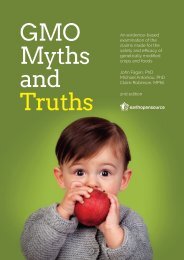1923%20Memoir%20on%20Maps%20of%20Chinese%20Turkistan%20by%20Stein%20s
1923%20Memoir%20on%20Maps%20of%20Chinese%20Turkistan%20by%20Stein%20s
1923%20Memoir%20on%20Maps%20of%20Chinese%20Turkistan%20by%20Stein%20s
You also want an ePaper? Increase the reach of your titles
YUMPU automatically turns print PDFs into web optimized ePapers that Google loves.
Sec. vi.] FROM (:EN'PItAI, NAN-SHAN '1'0 IS'IISIN-(;OI, 5 1<br />
ClimnLc of Centrni<br />
hnn-,ben.<br />
than that of tho Western Nan-slta~t or of the K'UII-lun. It indirater<br />
the vicinit,~ of tltc l'aeilic tlrainagc arcla whic.11 c:xtertdn to tltc adjoining<br />
prts of Kan-su anti of the 11ort.11-castern clplandfi of 'I'il~c:t. ~Ibl~rtrlant<br />
vegetation clothes the valleys from the westernmost limits of the! l'ei-ta-110 or Su-chou river's<br />
drainage and makes the big ope11 troughs at tilo lrcatl\\,atrrs c:xccllcr~t Hummer<br />
grountls, not\vitl~standing tl~eir great elevation, above 11,000 i'ect, and I'Bntir-like appearance.<br />
I"urther to the soittl~-east increasing snow ant1 r;~infall 1)r:rmita of r~lentiful forest<br />
gron,tl~ in t.he valleys of the Richthofen ltar~gc: draining into tltc Kan-chou river.<br />
Along the northern foot of this range at an elevation of about 5,000-6,000 feet, stretches<br />
a broad belt, of fertile alluvial fans, sel~arated in places by ucrub-covered<br />
CultivilLe" '- "' table-lands. :' Its northern limit is formed by the barren hill-chain<br />
Nau.hbn~~.<br />
overloolti~~g the middle course of the rivers of Kan-chou ant1 Su-chou,<br />
and belonging to the Ala-shan system of southernmost Mongolia. Over great parts of this<br />
second region, cultivation is assured by abundant irrigation from the rivers and also by the<br />
fact that from about the longitude of Kan-chou city eastwardfi, climatic conclitions along the<br />
fertile foot of thc Nan-shan permit of cult~vation dependent on snow and rainfall only.<br />
Hence we find in this region not only large and populous oases occuj~yi~~g the alluvial fans<br />
of the Su-choo and Kan-chol~ rivers, but also an almost cor~tinuous chain of smaller village<br />
tracts skirting the foot of the mountains beyond those fans.<br />
The pl~ysical features here briefly indicated have made this region historically a very<br />
important ' land of passage ' between China and Central Asia. For the<br />
passane tbrou2.h of Iinu-sn, N \Y. Chinese its possession was indispensable in economic and military<br />
respects ever since their policy of Central-Asian expansion more than<br />
two thousand years ago first opened the route through the north-western marches of Kan-su<br />
and along the So-lo-ho into the Tsrim basin. Bnt before their advent and during the periods<br />
their control of the route ceased, the abundant winter grazing which parts of this<br />
region afford, made it also for centuries a goal of conquest for a succession of nomadic<br />
nations. '<br />
A region of very different character stretches from the barren hill-range north of the<br />
chain of oases down to the terminal basin of the Etsin-gol. We find<br />
Cnlt~,",~",d~as On there, indeed, two narrow strips of cultivation, those of Chin-t'a and<br />
Mao-mei, lying beyond the gorges in which the rivers of Su-chou and<br />
Kan-chou, respectively, have cut their way through that range. But apart from them the<br />
whole of this legion consist,^ of desert ground, affording now but limited grazing in the delta<br />
which the Ebin-gal forms from a point about 60 miles below the lotver end of Mao-mei<br />
cultivation. ti Amidst the almost waterless valleys and plateaus which adjoin the Etsin-go1<br />
on the east and west, even camel grazing is scanty and confined to rare patches of ground.<br />
Nevertheless, the Etsin-qol valley has always possessed considerable importance as a<br />
highrvay for nomadic migration and trade from Mongolia into north-<br />
Et'in go' valleJ "<br />
western China. It resembles in this respect the territory of ancient<br />
higbn:~y.<br />
Lou-Ian, now completely abandoned to the desert, and this affinity is<br />
curiously illustrated also by the evidence of desiccation within historical times which the<br />
Etsin-=ol delta and its medisval remains rfford. 7 The fact that the river loses itself in two<br />
separate lake-beds ( Sheet No. 14. C. 4. ) is also of interest with regard to the observations<br />
made above concern in^ the simultaneous existence in earlier periods of two terminal basins<br />
of the Su-lo-ha, and concerning that of the Lou-Ian delta by the s~de of the Kara-koshun.8<br />
4, 6.<br />
' Near the 'r'u-ta.fan. Sheet No. 41. D. 1.<br />
2 Sue Sheers Sos. 43. U. 3, 4; 46. A. 3. 4., B. 4, C, D.<br />
8 SecShaets Nos.43 A-D,1,2; 46. A.2, B. 2.3,C.3,4.<br />
4 Cf Surindin, ii. pp. 113 ) sq. Such grnzing is to<br />
be found in plvntg ~tlollg the loser courses of all<br />
rivrrs that dr:~in the nor~hern slopes of. or pass<br />
through, the Llichthofen range. 11 18 not altogether<br />
absent evrn in the trnctsof drift--and to be met with<br />
between them ; see Sbeet Xo. 43. C, 1). 1.2.<br />
See Sheet Nr. 42. ILD. 4.<br />
See Sbeet Nc. 45. U. 2.<br />
7 Cf. l'hird Journy, Geogr. Jouraal, xlviii. pp.<br />
197 sq For the site of Kbnra-lrbotc, blareo Pula's<br />
'City of Rtzinn ', eee Sheet So. 45. C. V. 1.<br />
Cf. above pp. 31 sq.. 47






